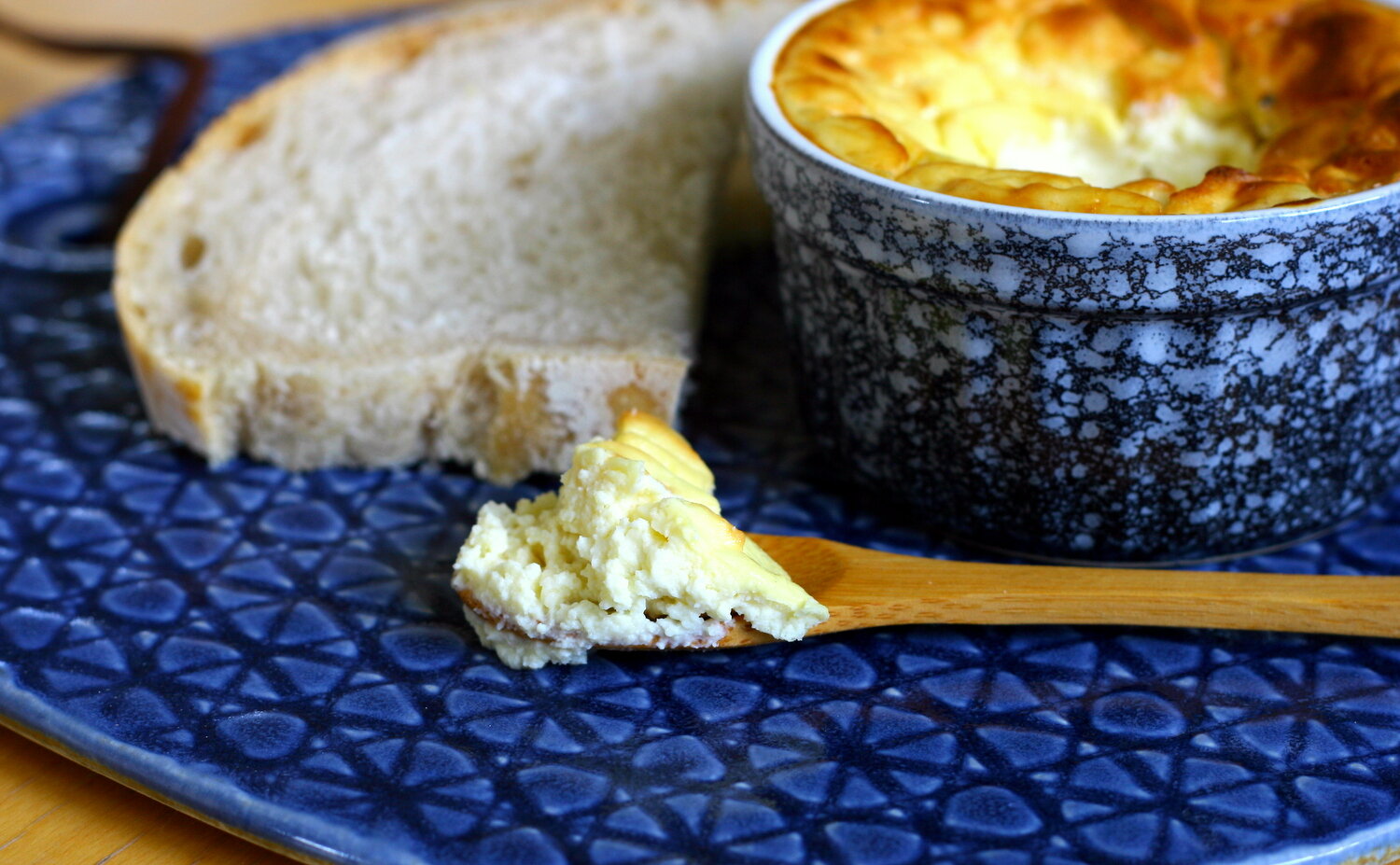Cauliflower cheese potted paté
This isn't quite Christmas leftovers, but the dish does have a similar backstory. It began as the cauliflower and cabbage terrine recipe in Stéphane Reynaud's book Terrine, becoming a variant when I uncharacteristically decided to ditch the cabbage, and (somewhat more on-brand) threw cheese at it.
The full recipe is at the end. I didn't get a picture, so you'll have to trust me that it turns out rather well - creamy and fresh with leeks and spring onion to contrast. We served it as a Christmas starter with a light mustard sauce, and folks seemed to go for it.
But what to do with the half pint or so of surplus tasty goo?A potted paté, and one I'll certainly be doing again now it's had a few tweaks.
Ingredients:
Cauliflower, 1 (not too big )
Cream cheese, 200g
Double cream, 50ml
Cheddar (a nice strong sharp one), 75g
Eggs, 4
Parmesan, about 1tbsp grated
Black pepper and maybe some salt
Eggs can be small or medium, just not, y'know, giant. If they're big, consider using two whole and two yolks, rather than three and one.
Optional (terrine version):
Leeks, 2-3
Spring onions, 4-5
Makes enough to fill 6 ramekins (with a splash over), or one loaf tin as a terrine.
Instructions:
For the simple potted version you just make up the mix and bake it off in a low oven. It goes like this:
Break the cauliflower into florets and simmer until just cooked. Drain well and let it cool.
Separate one of the eggs, keeping only the yolk.
In a blender, process the cream cheese, cream, eggs, and cauliflower until smooth. Grate the cheddar, and stir this in, along with a little black pepper. Don't blitz it at this point.
If you're not making the terrine, add the parmesan now, too.
Butter some ramekins, fill them with the mixture, and bake them gently in the oven at around 150c for 30-40 mins, until firm and lightly browned. The tops may crack, in which case, rather than fretting I tend to describe the dish as "rustic as fuck", and just serve with slightly chunkier bread slices.
You could also gratinate some cheese over the top at the end to hide it, if that's your thing.
They'll eat warm (but not oven hot, it needs to set and settle), but I prefer it chilled. It should spread pretty happily, and makes for a satisfying blend of rich but slightly fresh.
For the fancy-schmancy version:
...which I proper could not be bothered doing again just to photograph. Make of that what you will in terms of bang for your buck. Looks nice, mind.
So.
Make the same mix as above, omitting the parmesan.
Oil a loaf tin and line it with cling film, with plenty overhanging the edges so you can pull it over the top of the filled tin.
Poach the leeks and spring onions until just tender and cool in very cold water. Drain well. Trim the tops and bottoms from the cooled leeks, trying to keep plenty of green.
Gently run a knife longwise down each leek, carefully peeling off the layers as whole sheets.
Using the larger, greener outer layers, line the loaf tin, again with plenty of overhang so you can seal the top. Don't worry if the top isn't neat - it'll be the bottom when we turn the terrine out. Ideally, arrange the leek strips horizontally across the tin, so that when we cut through the terrine we'll be going with the grain. Try to keep the greener ends on the bottom, too. That part's just visual. When done, put to one side.
Pour this mix into the lined tin until just over half full. Trim the spring onions, and lay them on top of the mix, lengthwise along the tin - they'll look neat when you slice through. Sprinkle the parmesan on top of these, and top up with the rest of the mixture.
Carefully fold the overlapping leeks over the top, and then the cling film.Place the terrine in a pan of water coming around half way up, and put this in the oven (again, 150c or so) for 40-50 minutes, until set.
You can serve this warm, but good luck turning it out, much less cutting it. For warm, I'd use the potted variant. Ideally, leave the terrine to cool, then refrigerate overnight. Turning out should then be easy - just loosen the cling film, plate, flip, remove the film.
Slicing is a bit more ticklish. It should be set, but still quite soft, spreadable, in fact. So use very light, long, slicing strokes, especially as the knife hits the spring onions. It's fragile, and can squish under pressure. But with a gentle touch and a decently sharp blade you should be fine.Words to live by, really.

